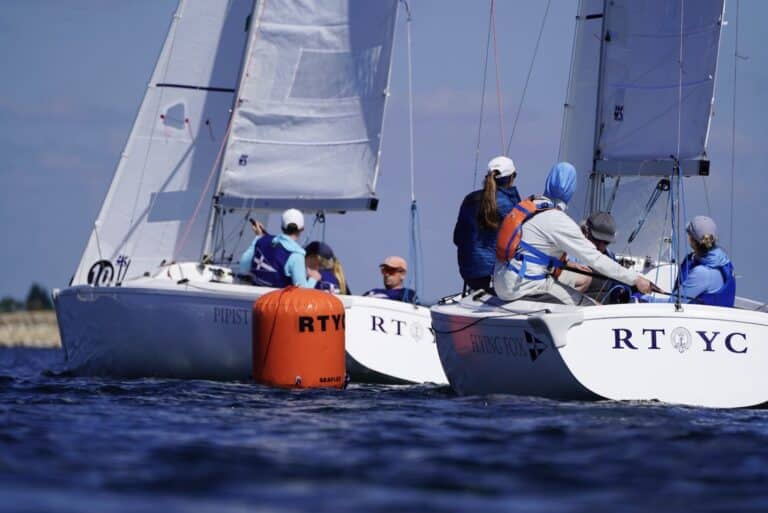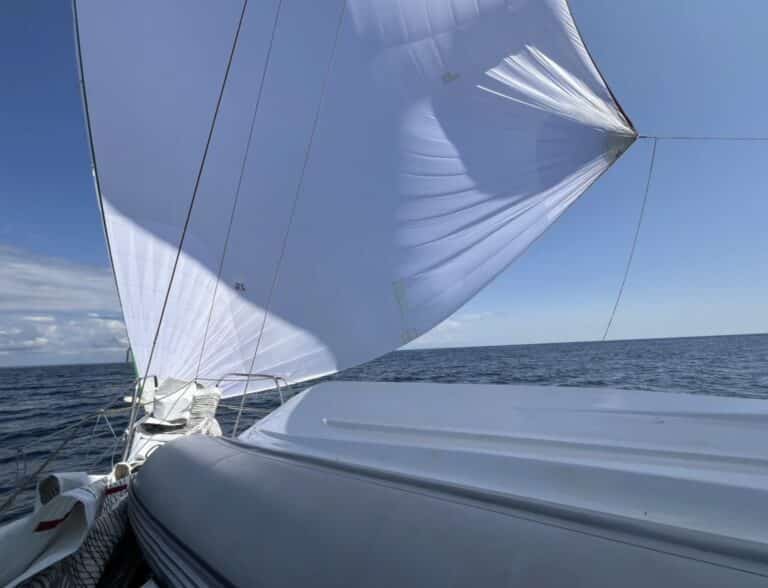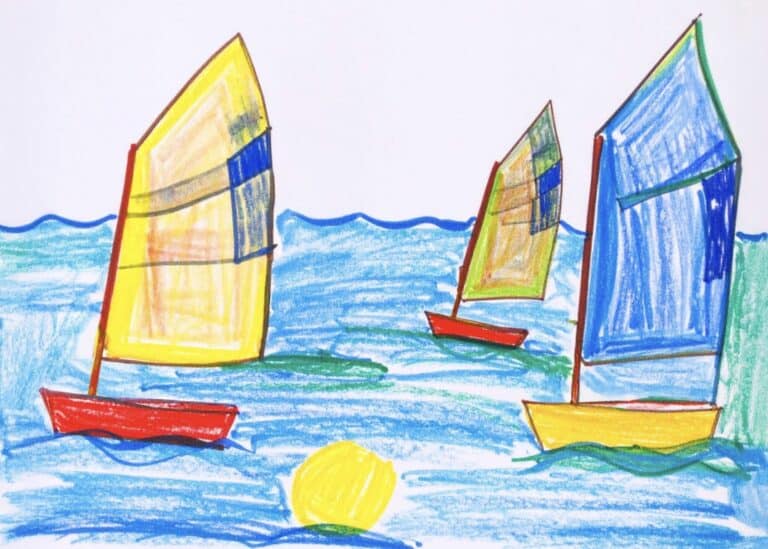Approaching the layline in a tight fleet can be a make-or-break moment for the rounding order, and ultimately, the outcome of the race. Countless sailors have experienced the frustration of losing ground to competitors near the end of a beat because they misjudged their tactics around the layline. Understanding this aspect of windward mark roundings and learning how to navigate layline decisions with finesse can significantly improve your racing performance.
When trailing behind competitors, it’s crucial to avoid committing to the layline prematurely. This generally occurs by tacking very little on the beat, or by taking a “flyer” and hitting the layline with a long closing distance to the windward mark. Committing to a layline early is a dead-end for decision making, leaving you with very limited options aside from heading straight for the windward mark with leading boats tacking on your bow, giving you bad air for the rest of the leg. You can’t avoid the layline forever, but it’s good to consider tacking short of it as you prepare your final approach, even if you’re favoring one side of the course. This strategy will allow you to accommodate shifts, preserve maneuverability, and keep a few options open.
As you approach the windward mark, assess the situation carefully. If you anticipate other boats tacking on top of you, or another potential conflict, consider going very slightly past the layline before executing your tack. This strategy provides a buffer against interfering boats and allows room for adjustment in case of an unexpected wind shift. Moreover, if you don’t require the extra height, utilizing your slightly-overstood position to bear off the wind and approach the mark powered up can enhance speed and maneuverability. In crowded fleets, pinwheels can form and there’s usually at least one boat attempting desperate maneuvers, such as a double-tack or trying to pinch around the mark. Having the option to head up and swiftly navigate around this congestion can significantly trim down the distance between you and competitors forced to tack away to avoid it.

In situations where you observe that boats already on the layline are overstood, it can be advantageous to take a small risk and tack directly onto the layline below them into the best available lane, rather than sailing excess distance. This strategic decision optimizes your positioning and minimizes the risk of losing ground to competitors.
Conversely, when leading the pack, the layline becomes your ally. Once you reach it, overtaking you becomes challenging for trailing boats. Hence, it’s advantageous to guide the competitors beating toward the layline and stay between them and the windward mark. By doing so, you not only secure your position tactically but also gain a strategic advantage.
However, reaching the layline first with a long approach isn’t always ideal in this scenario either, as it invites trailing boats to play follow the leader; in a mixed fleet, a faster, larger boat may attempt a cover or lee bow to force you out of the ideal layline position. Before reaching the layline, assess the positions of boats around you. If there is a competitor nearby, consider taking another tack before the layline to shorten your final approach and avoid potential interference.

Despite your best efforts, boats will still attempt to cover or lee bow you on the layline if they can. In this scenario, weigh your options carefully. Factors such as proximity to the windward mark and the impact of bad air from the other boats will influence the decision between a quick double-tack for clear air or choosing to continue in unfavorable conditions. Your best course of action hinges on finding the balance between minimizing tactical losses and maximizing strategic gains.
If you find yourself mid-fleet with a pack of boats, the starboard tack layline may be congested while the port-tack layline is underutilized. Approaching too close to the windward mark on the port-tack layline risks complications because you’ll still need to find a hole on the starboard layline that you can tack back into. In a dense fleet, there may not be a large enough gap on the ideal layline that you can tack into without risking a protest. In this case, decide whether you should cross or duck a boat on the starboard layline and then tack back in the best lane available. To mitigate risks on a port approach, maintain a safe distance from the actual port tack layline, ensuring ample room to complete your tack before entering the three-hull length zone around the mark where additional rules apply, and the competitors are feistier.

By strategically anticipating laylines, sailors can optimize their racing performance and gain a competitive edge on the course. Whether trailing or leading, understanding when to approach, avoid, or manipulate the layline can significantly impact your success, particularly in round-the-buoys racing. But don’t forget to ask yourself the other key questions on your upwind leg as you begin planning your layline approach. Where is the most pressure? Where is the next shift? Is there an offset mark? Do I have a lane and clear air now, and will I if I choose to tack? The key to success is acting proactively instead of reactively on the course where possible. Anticipating the events of the beat and thinking a few steps ahead will make a big difference in your results.




